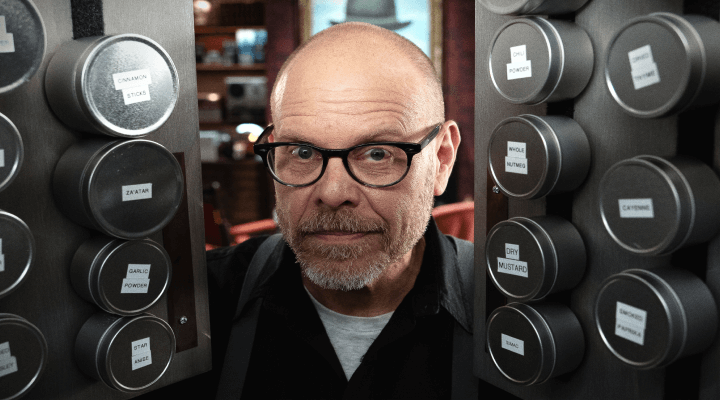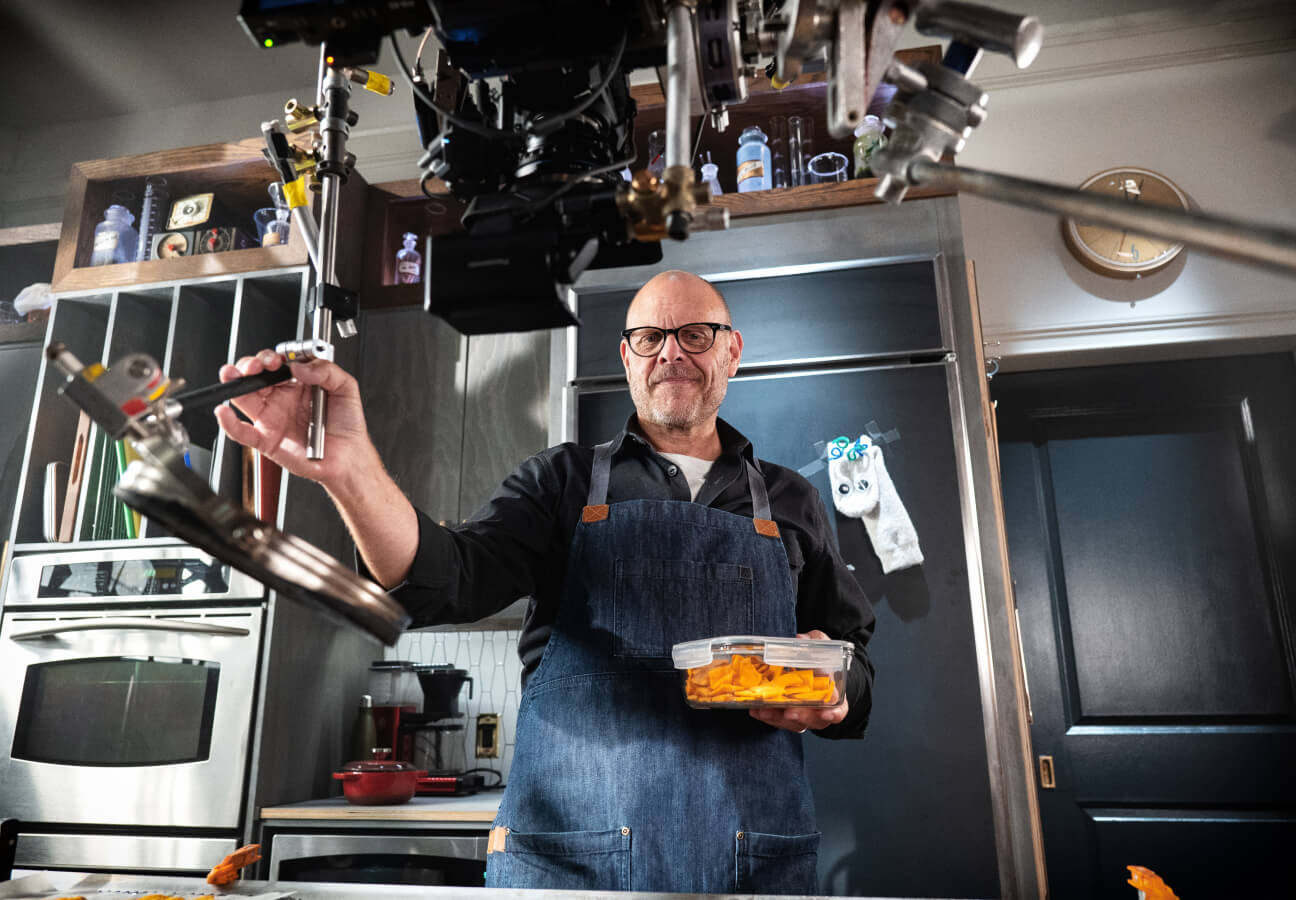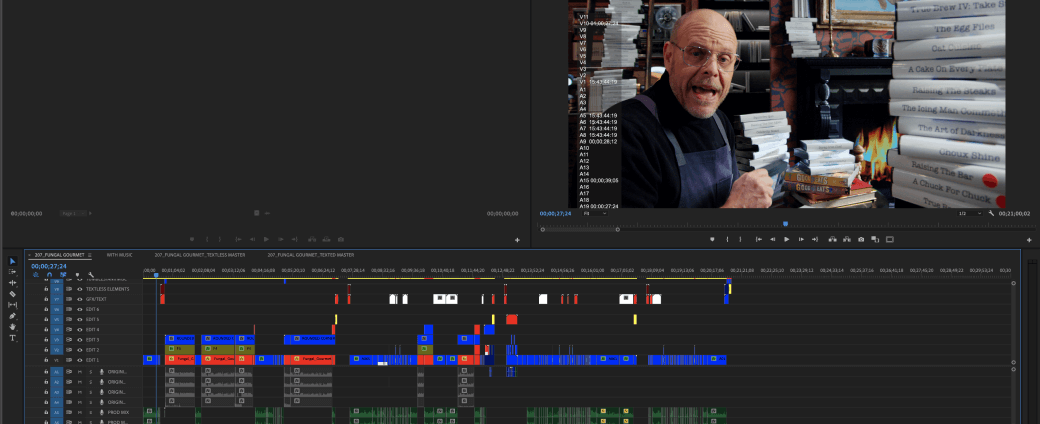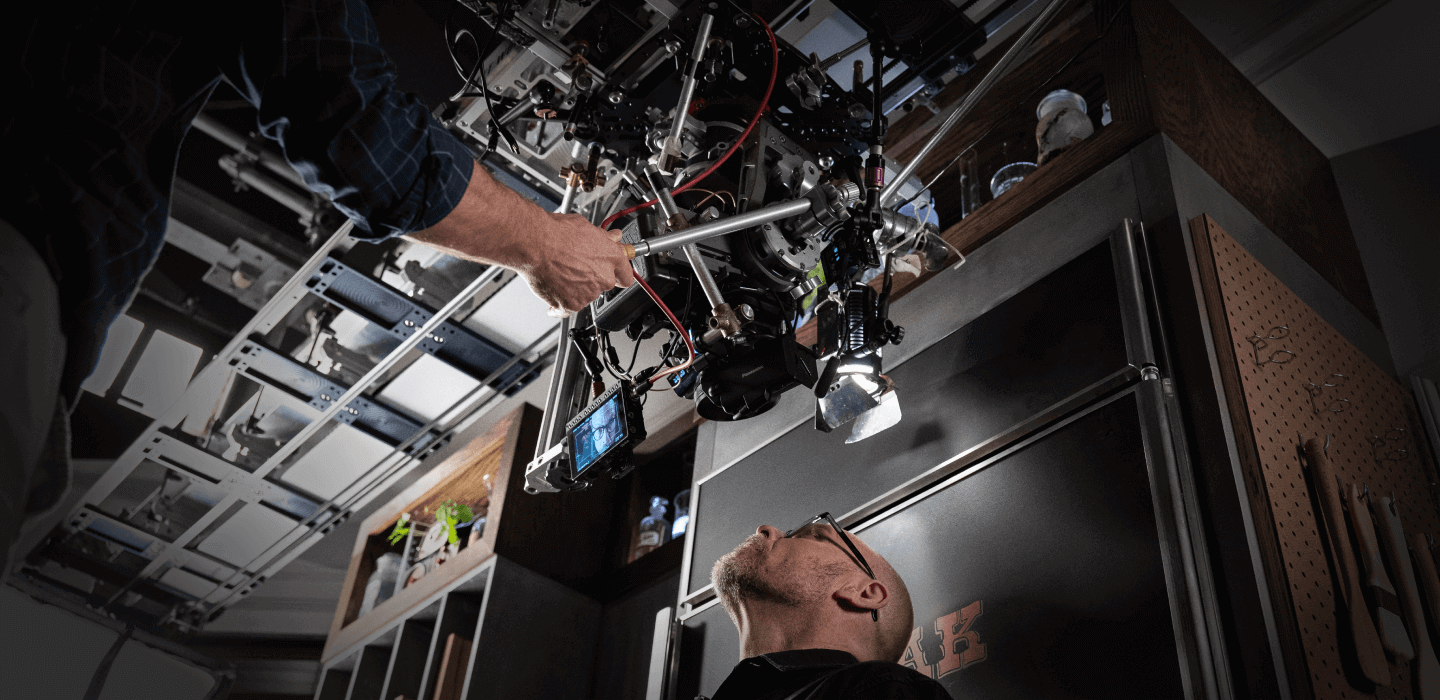Good Eats


Time saved is by a factor of 100. I just don't have to think about it anymore. It's done, and that means I'm done.
Eric Bigman, Head of Post-Production/Editor, "Good Eats: Reloaded" and "Good Eats: The Return"
When host Alton Brown revived the hit TV show, “Good Eats,” Head of Post-Production/Editor, Eric Bigman, had to update deteriorating tape from 1999 and preserve new footage for posterity, but he found Amazon S3 unreliable and time-consuming to manage. He needed real-time backup and archiving workflows that didn’t require babysitting.
After a recommendation from a trusted media IT provider, Bigman switched to Backblaze B2 Cloud Storage. During filming, Bigman backs up footage to Backblaze B2 as soon as it comes off camera, ensuring it’s safe and available for continuity checks with virtually zero upload failures. The incredible ease of use Backblaze provided Bigman even allowed him to seamlessly transition to working remotely.
Backblaze B2’s cost-effectiveness and reliability allow Bigman to keep every single working file so future production teams can bring episodes back to life in their entirety. With B2 Cloud Storage, Bigman estimates a 100x time savings in managing backups and archiving, meaning he can focus on his goal of making “Good Eats: The Return” the best-looking TV show on the Food Network.

Equal parts smart and sardonic, “Good Eats” uses classroom methods and wacky comedy sketches to explain not just how to whip up an excellent dish, but how the ingredients interact when you put them together. Creator and host Alton Brown cites a combination of Julia Child, Mr. Wizard, and Monty Python as inspiration. The show first ran from 1999 through 2013, but staged a comeback in 2018 with “Good Eats: The Return,” a continuation of the original with all new content, and “Good Eats: Reloaded,” a re-edit of older episodes.

After the last season of “Good Eats” in 2012, host Alton Brown would occasionally tease a comeback of the much-beloved show on social media. Eric Bigman, a freelance film editor and longtime fan of Brown’s, kept a close eye on those posts. In a moment of serendipity that could only happen in New York City, Bigman found Brown's business card tucked inside a sample book at a small stationery shop and snapped a fateful photo of the star’s contact information.
A few months later when Brown dropped another hint about a revival, Bigman jumped at the chance and emailed Brown directly. With no post-production infrastructure, Brown needed someone who knew their stuff. Bigman reached out just in time. The job was his.
Brown planned to film fresh episodes for the Food Network and brand the new show “Good Eats: The Return.” But first, he wanted to update some classic episodes from the first 13 seasons as “Good Eats: Reloaded,” to air on the Cooking Channel.
Bigman's first task as Head of post-production/editor was to parse through those older episodes from as early as 1999, and figure out where to add new footage to the old programming. "It's like doing a jigsaw puzzle without a picture, and you're working from two different boxes—one from 20 years ago and one from now," Bigman said.
The show was originally shot in standard definition and saved on DigiBeta. The tapes sat in the Food Network's content library for decades. When Bigman asked for the episodes, someone at the Food Network would put the master in a tape reader, connect it to an Avid, ingest it to a disk, and then send Bigman the digital file. "The material had been through a lot of steps at that point, and it was degraded," Bigman recalled. It had also been shot in full screen, so it had to be stretched to match the new widescreen, high-definition footage. Bigman admitted, "A lot of times, we just had to own the fact that it was really old."
Nevertheless, they put tremendous effort into blending the old and new footage. When it debuted, the first episode of “Good Eats: Reloaded”—a remake of the very first “Good Eats” episode titled "Steak Your Claim"—was the most-watched show in Cooking Channel history. It was even nominated for a James Beard Award, one of the most prestigious honors in the restaurant and cooking industry.
Because he was adjusting to a new team and process, Bigman waited until the end of that first season to archive his data using Amazon S3 while simultaneously trying to finish post-production. "Uploading took a lot of time. Time I didn't have while trying to deliver 13 episodes on deadline," he said. Bigman knew they needed a better workflow.
When they started production for “Good Eats: The Return,” Bigman worked toward a more fluid, integrated process. He started backing up every other week rather than waiting until the end of the season, but it was still too time-consuming. "I would get a lot of failures," Bigman noted. He needed a better system, too.


Well, what if the building blows up tomorrow?
Alton Brown, Creator and Host, "Good Eats"
One night, in the middle of production for “Good Eats: The Return,” Brown texted Bigman with concerns about data. "He was very worried," Bigman said. "It was 10 p.m. at night after a long shooting day. ‘The Return’ was kind of his baby, and our goal is to make it the best-looking TV show on the Food Network. We shot a lot that day, and he didn't want to lose that footage."
Bigman assured him that everything was saved on hard drives and duplicated in a few places, but Brown persisted, exclaiming, "Well, what if the building blows up tomorrow?"
"Luckily, I was prepared with a plan in place," Bigman said. But the call from his boss put him in a mood to harden the process further.
Bigman started backing up every night to be absolutely certain a day’s work wouldn’t be lost, but he became increasingly frustrated with Amazon S3. The team uses a small, 40TB Avid NEXIS storage platform to hold their footage on site. "It's not a lot of data," Bigman remarked. It should have been easy.
He ran the backups overnight to ensure he got maximum bandwidth. "Nine times out of 10, I walked into a pipeline failure in the morning. I couldn't trust [AWS]," he said. Bigman then resorted to running backups during the day so he could babysit the process, even if it did tie up important computer resources. There was no avoiding it though, he had to watch the progress bar and click continue for every pipeline failure. "It eats up so much time. It eats up your sanity," he complained. It was time for a change.

Bigman turned to CineSys-Oceana, the show's media IT provider, for a better backup and archiving solution. They suggested Backblaze B2 Cloud Storage. "It was the biggest quality of life improvement I could have hoped for," he said. "The failure rate is basically zero." Bigman chose Cyberduck, a libre server and cloud storage browser that integrates with Backblaze B2, to upload data.
When they're in production, Bigman keeps the Cyberduck browser open and constantly uploads assets to Backblaze. "That asset just leaves my mind," he stated. "I do that in real-time in case, of course, the building blows up, but also so I don't have to spend another week archiving files once the last show is delivered."
After dealing with deteriorating tape and missing working files on “Good Eats: Reloaded,” Bigman saves every take, blooper reel, and camera angle for posterity. "The act of hitting delete goes against every instinct in my body," he joked. "If there's ever a need ten years down the road, they can download everything. I'm very meticulous about my backups." With Backblaze, he can afford to be.


Nine times out of 10, I walked into a pipeline failure in the morning. I couldn't trust [AWS].
Eric Bigman, Head of Post-Production/Editor, "Good Eats: Reloaded" and "Good Eats: The Return"
Bigman originally intended to move the show’s archives from Amazon S3 to Glacier to reduce costs. But with Backblaze, he no longer needs to balance access to footage against his budget. "Not having to do the cost-benefit analysis of keeping it on [Amazon] S3 versus moving it to Glacier is huge. Having it on Backblaze B2, I know the service we're getting for the cost is worth it. Everything is always accessible if I need it,” he said.
That instant access is critical during filming. Bigman often pulls footage for continuity checks. "We switch between setups on the show, and everything has to match—what's on the counter, what Alton's wearing. I'm the point of reference for that.” He wondered, “What if the NEXIS server dies overnight and needs to rebuild for 24 hours? If they need information and I don't have it, I'm costing the entire production a lot of money." The real-time workflow and Backblaze's simplicity ensure that Bigman can always access footage he needs.


It was the biggest quality of life improvement I could have hoped for. The failure rate is basically zero.
Eric Bigman, Head of Post-Production/Editor, "Good Eats: Reloaded" and "Good Eats: The Return"
When they started production on the second season of “Good Eats: Reloaded,” Bigman moved to working from home in New Jersey while the rest of the team continued work in Atlanta. The benefits of a fully cloud-based workflow with Backblaze became even more apparent.
Bigman's assistant in Atlanta easily accesses data through the Backblaze website. "Most of Backblaze's competitors don't have good online access. If I need him to send me a quick file, he can log on to the Backblaze website and use the GUI right there to drag and drop. It helps spread the work out," he noted.
With virtually zero upload failures, cost-effective storage rates, instant access, and seamless workflows, Backblaze saves Bigman the most critical resource on a quick-turnaround production—time. "Time saved is by a factor of 100," Bigman stated. "I just don't have to think about it anymore. It's done, and that means I'm done."
Alton Brown is nothing if not famously precise. With Backblaze, Bigman can now match Brown’s scrupulous standards with a data backup and archiving solution that’s just as meticulous as his cooking methods.


CineSys-Oceana provides systems, solutions, integration, and support for digital content creators. Its focus industries are broadcast, post-production, government, corporate, houses of worship, and sports.

Cyberduck delivers an easy-to-use, drag-and-drop interface to move your files to and from Backblaze B2 Cloud Storage. Cyberduck supports large files up to 10TB, high-performance uploads, and other advanced features.
The Backblaze B2 Storage Cloud is purpose-built for ease. It offers always-hot, S3 compatible object storage that supports your workflows via third-party software integrations, APIs, CLI, and web UI. And it’s priced for easy affordability at rates a fraction of other cloud providers. Businesses in more than 175 countries use the platform to host content, build and run applications, manage media, back up and archive data, and protect and recover from ransomware.